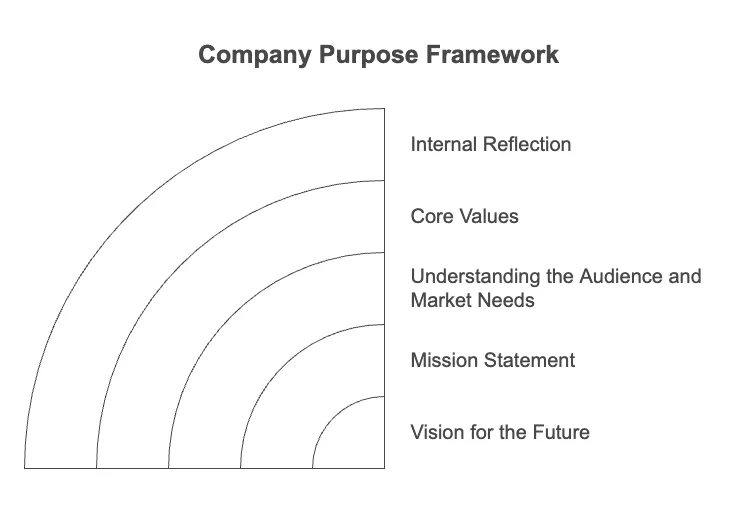Define Your Company Purpose.
If you're building a marketing strategy, the first step is getting clear on 'why' your company exists. A strong purpose shapes your messaging, guides your decisions, and helps you connect with the right customers. Let’s break it down.

Defining Your Purpose
A company or business typically defines its purpose during its early stages, ideally before any significant marketing or digital marketing efforts begin. This is part of the process of the business shaping it's vision, mission, and long-term direction.
Here's how a company defines its purpose:
• Internal Reflection
• Core Values
• Understanding the Audience and Market Needs
• Mission Statement
• Vision for the FutureDivider
1. Internal Reflection:
Start with why you really started this company.
Founders and leadership should take a step back and think beyond the numbers. Why does this business exist? What do you care about? What values drive you? Think about the long-term vision and the kind of positive impact you want to make on your customers, your team, and the world around you. This reflection sets the tone for everything that follows.
Summary: Consider the core values, long-term goals, and the positive impact you want to make on customers, employees, and society.
2. Core Values:
Define what you stand for—then live it out.
Your core values are the principles that guide how your business operates day to day. They support your purpose and shape how you make decisions, communicate, and show up for your customers. When your values are clear—and consistent—they build trust, strengthen your brand, and create a company culture people want to be part of.
These values are crucial for maintaining consistency in branding and company culture.
3. Understanding the Audience and Their Needs:
Purpose means more when it solves a real problem.
To define a meaningful purpose, the business must understand the problems or needs of its target audience. Aligning the company's purpose with these needs ensures that the business is relevant and offers real value.
To shape a purpose that matters, you need to know who you're helping and what they truly need. What are they struggling with? What do they care about? When your purpose aligns with the needs of your audience, your business becomes more than relevant—it becomes valuable. That’s where real connection (and growth) begins.
4. Turn Your Purpose Into a Mission Statement:
Make it clear. Make it actionable.
Your purpose comes to life through a mission statement—a simple, focused message that answers:
• What does the company do?
• Who does it serve?
• How do you make a difference?
This mission statement is the guiding principle that informs business decisions, product development, and customer interactions. It keeps your decisions aligned, your products intentional, and your customer experience consistent.
5. Vision for the Future:
Look ahead—what change do you want to create?
Your mission covers what you do now. Your vision paints the bigger picture. It’s your long-term, aspirational goal—the impact you hope to make in the future. This is the deeper “why” that drives your business forward and inspires others to get behind it, from your team to your customers.
Want to know more? Let's Talk!
I’d love to meet you, hear about what you’re working on, and see how I can help support you.

Facebook
LinkedIn